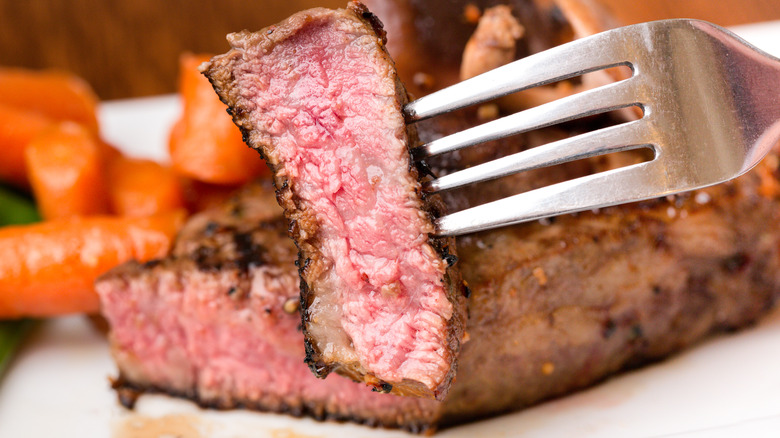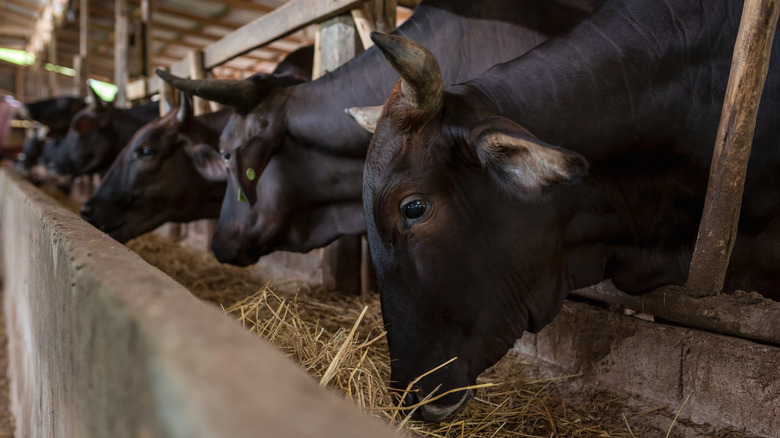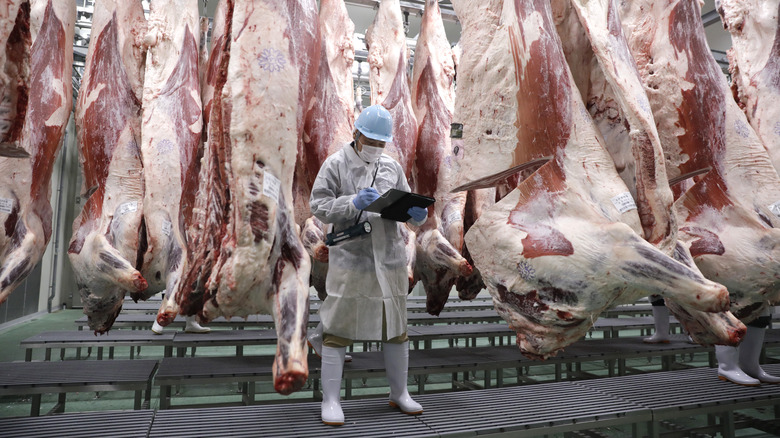Why Real Kobe Beef Is So Incredibly Hard To Find In The US
Few foods are held in such high esteem as steak. The idea of slicing into an expertly carved cut of meat that has been given a spectacular sear is enough to make your mouth water. However, before you get to grilling, you should know that all steak is not created equal.
If you're attempting to choose the best cut of beef, and money is no object, one obvious option is Kobe beef, the world's most expensive steak. Kobe beef is considered the top tier of wagyu beef, a fatty meat that comes from Japanese cattle that have been specifically bred for flavor. The strict list of standards that a cut of steak must adhere to in order to be labeled Kobe makes it rather difficult to find in the United States. In fact, just a few thousand head of genuine Kobe cattle are bred and butchered every year, and only a fraction of this coveted meat is shipped to the United States.
What is Kobe beef?
Wagyu beef comes from a few specific breeds of cattle. One wagyu variety, Kobe beef, is even more rare. Only meat from one breed of cattle, Tajima-gyu, can be called Kobe, and basic biology won't suffice for this coveted classification. Kobe cattle are usually born and bred in a specific region of Japan: the Hyogo prefecture. On the five-point sliding scale of quality, the meat must be a four or higher to be considered Kobe. When placed on the 12-point scale, which judges marbling, Kobe must score over six. Kobe beef appears white when raw because of its incredible marbling, which gives the steak its signature richness.
In 2010, the prevalence of foot-and-mouth disease among cattle in Japan caused the United States to place a ban on wagyu beef. This total ban began to lift just a few years later, but it is still difficult to find real Kobe beef in the U.S. The relatively relaxed restrictions that American agencies have placed on food claims make it nearly impossible to discern what is and isn't the genuine article. Kobe beef, by definition, is raised in Japan, but even wagyu beef raised in the United States is crossbred with cattle that are better suited to North American climate conditions. Since the import restrictions were rolled back, many meat purveyors have begun to sell products that falsely bear a Kobe label.
The limitations of Kobe beef shipment
The strict standards that Kobe beef must adhere to unquestionably contribute to its rarity in the U.S. Only 12 Kobe bulls are chosen for breeding every year, and the farmers that rear these coveted cattle must receive certification. While some wagyu cattle are bred in the U.S. (and this domestic wagyu beef has earned the USDA prime certification) bonafide Kobe beef still only comes from Japanese cattle.
Of the several thousand Japanese cattle that stand up to scrutiny on an annual basis, only ten percent are ever shipped out of the country. There are just over 40 restaurants in the United States that have received the proper certification for selling authentic Kobe steaks, and only eight U.S. sources can even sell the beef to begin with. When you understand how rare it is for a head of cattle to qualify as Kobe and how strict limitations have been placed on the breeding of said cattle in order to ensure quality, it's easy to see why it is hard to come across in the United States.


